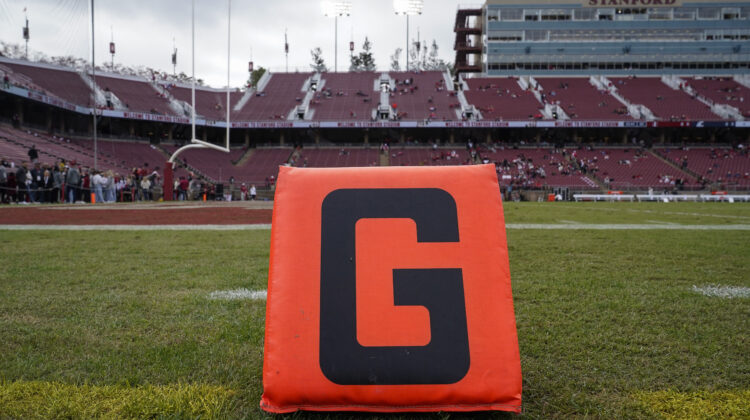For the Bay Area teams, the unveiling offered a glimpse into the reality that comes with competing in a conference based in Charlotte and stocked with unfamiliar opponents.
Stanford’s home lineup next season features conference games against Louisville, Virginia Tech, SMU and Wake Forest.
Cal’s home schedule for ACC play includes Miami, N.C. State and Syracuse, along with Stanford.
Yes, the longtime Bay Area rivals will continue to play each other every year — they are counted as permanent opponents in the ACC’s model.
Both will play SMU, which is based in Dallas, in annual home-and-away fashion, as well.
By shrewdly creating that three-team group of permanent opponents, the ACC reduced the number of times Cal and Stanford will fly to the East Coast and the frequency with which the East Coast teams visit the Bay Area.
The ACC plays an eight-game league schedule (four home and four away). Because two games will always be played within that three-team group, the Cardinal and Bears will have just three road games against teams in the Eastern Time Zone each season.
(The travel demands will be vastly more arduous for sports like basketball, baseball and softball.)
“We are extremely excited to welcome Cal, SMU and Stanford to the ACC and look forward to having them compete beginning in the fall of 2024,” ACC commissioner Jim Phillips said in the conference’s release.
“Throughout the entire scheduling model process, the membership was incredibly thoughtful and purposeful in building a creative, flexible and aggressive conference scheduling model while keeping the student-athlete experience at the forefront.”
Other key points:
— The full 2024 schedule, with dates, will be announced on Jan. 31.
— The ACC won’t have divisions. The top two teams (by winning percentage in conference games) will meet in the championship.
— Each of the 17 schools will play every other team at least twice over the seven years.
— The 14 current ACC members will play on the West Coast three times during the stretch.
That means the ACC’s two football bluebloods, Clemson and Florida State, only make three trips to the West Coast over the seven-year rotation.
Florida State visits Stanford in 2025 and 2030 and Cal in 2027.
Clemson visits Cal in 2026 and 2030 and Stanford in 2028.
Here’s the full home-and-away ACC rotation for each school.
Cal
2024
Home: Miami, North Carolina State, Stanford, Syracuse
Road: Florida State, Pittsburgh, SMU, Wake Forest
2025
Home: Duke, North Carolina, SMU, Virginia
Road: Boston College, Louisville, Stanford, Virginia Tech
2026
Home: Clemson, Stanford, Virginia Tech, Wake Forest
Road: NC State, SMU, Syracuse, Virginia
2027
Home: Boston College, Florida State, Louisville, SMU
Road: Georgia Tech, Miami, Pittsburgh, Stanford
2028
Home: Georgia Tech, NC State, Pittsburgh, Stanford
Road: Florida State, Louisville, SMU, Wake Forest
2029
Home: Duke, Miami, SMU, Syracuse
Road: Boston College, Clemson, North Carolina, Stanford
2030
Home: Clemson, North Carolina, Stanford, Virginia
Road: Duke, Georgia Tech, SMU, Virginia Tech
Stanford
2024
Home: Louisville, SMU, Virginia Tech, Wake Forest
Away: California, Clemson, NC State, Syracuse
2025
Home: Boston College, California, Florida State, Pittsburgh
Away: Miami, North Carolina, SMU, Virginia
2026
Home: Georgia Tech, Miami, NC State, SMU
Away: California, Duke, Louisville, Wake Forest
2027
Home: California, Duke, North Carolina, Syracuse
Away: Boston College, Clemson, SMU, Virginia Tech
2028
Home: Clemson, SMU, Virginia, Virginia Tech
Away: California, Georgia Tech, Miami, North Carolina
2029
Home: Boston College, California, Louisville, Wake Forest
Away: Duke, Florida State, Pittsburgh, SMU
2030
Home: Florida State, Georgia Tech, Pittsburgh, SMU
Away: California, NC State, Syracuse, Virginia
*** Send suggestions, comments and tips (confidentiality guaranteed) to pac12hotline@bayareanewsgroup.
*** Follow me on Twitter: @WilnerHotline
*** Pac-12 Hotline is not endorsed or sponsored by the Pac-12 Conference, and the views expressed herein do not necessarily reflect the views of the Conference.
Related posts:

(AP Photo/Ralph Freso, File)
Business of Sports – Pac-12 future revenues could be half those of the SEC by the end of the 2020s Pac-12 football: The Hotline’s post-spring practice predictions for the 2022 division races
Pac-12 football: The Hotline’s post-spring practice predictions for the 2022 division races
 Pac-12 power ratings: Oregon on top, as Stanford and ASU race to the bottom, 0-18 looms
Pac-12 power ratings: Oregon on top, as Stanford and ASU race to the bottom, 0-18 looms

(AP Photo/Ralph Freso, File)
Wilner – And Utah makes 10: How every departing Pac-12 school drove a knife into the conference

